Hi there, it’s been about three weeks now since I started DXing with the Eton Satellit and I thought it time to post an updated review, based on my experiences thus far, along with some recent catches. Noting that other radio hobbyists with a strong presence online have been posting neutral to negative reviews on this receiver, I would just like to point out, perhaps rather obviously, that no receiver is perfect and just as importantly, the criteria on which a portable radio is judged will be different from user to user, based on their listening habits. I am almost exclusively engaged in DXing with the Satellit, whilst others will be listening on the broadcast bands on a more casual basis. I know that for some, the ultimate quality and finish of a product is as important as performance and they would make their physical assessment in a very detailed manner. I on the other hand focus mainly on performance and as regards quality, I’m reasonably satisfied if it doesn’t fall apart in my hands, straight out of the box! That actually happened – and it’s sort of where I draw the line 🙂 I guess the point is, I try to respect everyone’s opinion, irrespective as to whether we are in agreement or not and I believe that’s healthy for the future of our hobby.
Ok, back to the Satellit. Firstly, I am able to confirm that in terms of ultimate sensitivity, this portable is very close to my Sony ICF-2001D – one of the most highly regarded portables ever made. The delta in performance between the two is most perceptible on the weakest of fading signals that intermittently deliver audio with the Sony, but can’t be heard on the Eton. On stronger signals, my experience is that either radio might provide the strongest and or highest fidelity audio. I have a series of comparison videos already in the can, which will be uploaded to the Oxford Shortwave Log YouTube channel soon.
In terms of selectivity, the digital bandwidth filters work very well, although I note that even on the narrowest setting (2 kHz) when operating in a crowded band, adjacent channel QRM can occasionally still sound quite pronounced, as compared to my Sony ICF-SW55 or ICF-2001D receivers. As regards synchronous detection, this is more of a hit-and-miss affair. Subscribers to my channel might notice that in nearly all of my reception videos featuring the Eton Satellit, I have not engaged the SYNC. That isn’t to say it doesn’t work, however, even with selectable sidebands, the SYNC mode often appears to increase the overall signal amplitude and noise floor, without positively influencing the SNR. However, it’s interesting to note that signals on the Satellit in AM mode often almost match the ICF-2001D in SYNC mode, in terms of overall SNR. More on that to come.
There are a number of ways to tune the radio; manually using the tuning knob (and this has a decent feel/ resistance to it), direct frequency input which requires pressing the ‘AM’ button to engage, automatic search and access to 700 memory locations, via 100 screen pages. In the real world – and by that I mean ‘my world’ which is most often in the middle of a field, or the woods, all of the above tuning options are as ergonomic as most of my other portables. With regard to SSB reception, there are fast, slow and fine tuning options with a maximum resolution of 10 Hz and this works very well to reproduce natural sounding speech in LSB and USB modes. The tuning speed/fine options are engaged by pressing the tuning knob inwards towards the set – quite a neat idea. With SSB and SYNC there’s always a little pause whilst the electronics engage – a set of chevrons appear on the screen to indicate the receiver is actually doing something. It’s similar to the Sony ICF-SW77 where you effectively toggle between SYNC USB and LSB and wait for lock. Not an issue for me, but it might annoy some, particularly those who have experience with the ICF-2001D, where SYNC engagement is instantaneous, if the signal is of sufficient strength. A small point, but worth making.
So, overall, a brilliant little radio that in my opinion is completely worthy of the ‘Satellit’ branding, at least in terms of ultimate performance. As I mentioned previously, one of the most experienced DXers I know, with more than 3 decades of listening to the HF bands and an owner of a number of vintage Satellit receivers noted that the Eton Satellit outperformed them – and by some margin. To further demonstrate this, I have included links to recent reception videos. In particular, I copied three of the regional AIR stations with signal strength and clarity that had never previously been obtained. I also copied HM01, the Cuban Numbers Station for the first time on the 11 metre broadcast band, Sudan and Guinea on the 31 metre broadcast band (a whopping signal from Guinea) and Polski Radio 1 on longwave. I hope you find them interesting. Since featuring the Satellit on my channel, one of two of my subscribers have purchased this radio and thus far have been very happy indeed with it’s performance.
Ultimately, I have to strongly recommend this portable to anyone interested in DXing and in particular those that embark on DXpeditions. I just hope that should you decide to buy one, you receive an example that performs was well as mine. Embedded reception videos and text links follow below, In the mean time and until my next post, I wish you all great DX!
Click here to watch on YouTube
Clint Gouveia is the author of this post and a regular contributor to the SWLing Post. Clint actively publishes videos of his shortwave radio excursions on his YouTube channel: Oxford Shortwave Log. Clint is based in Oxfordshire, England.

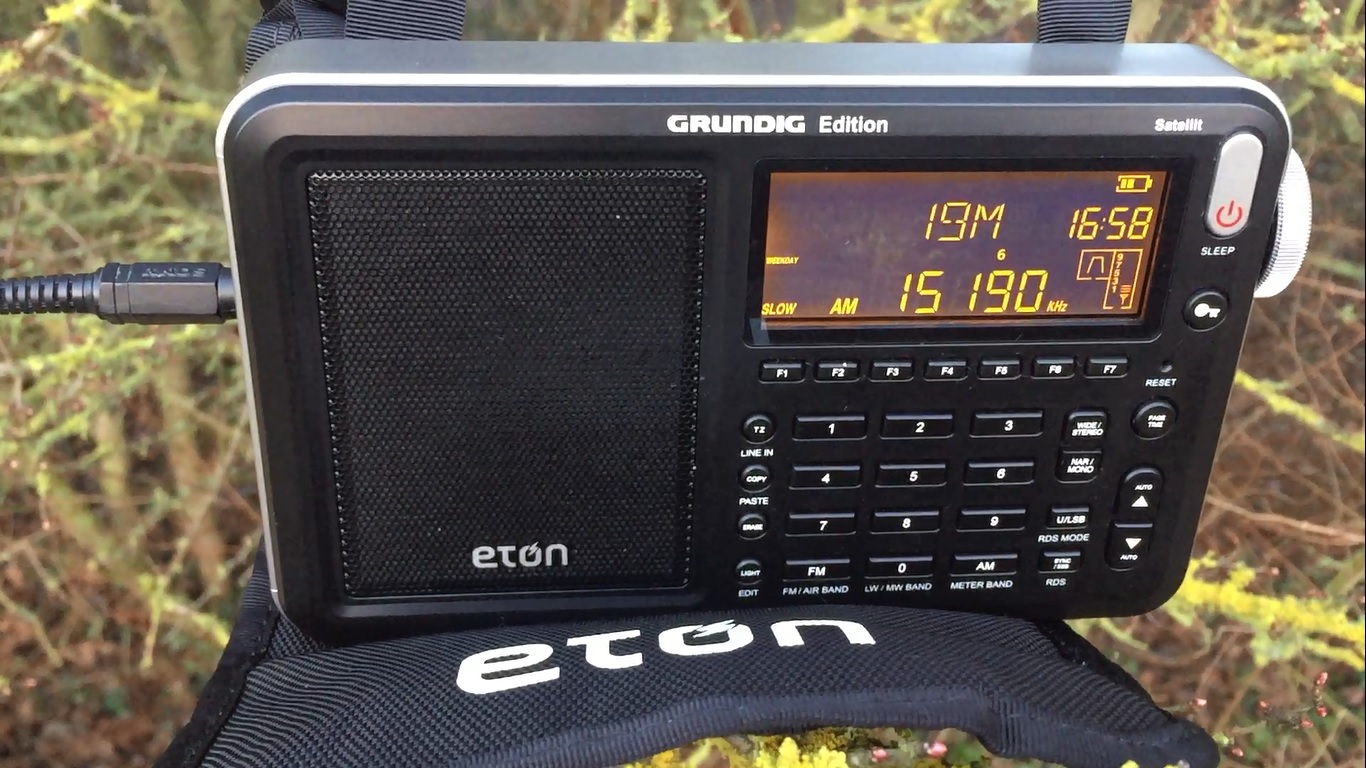
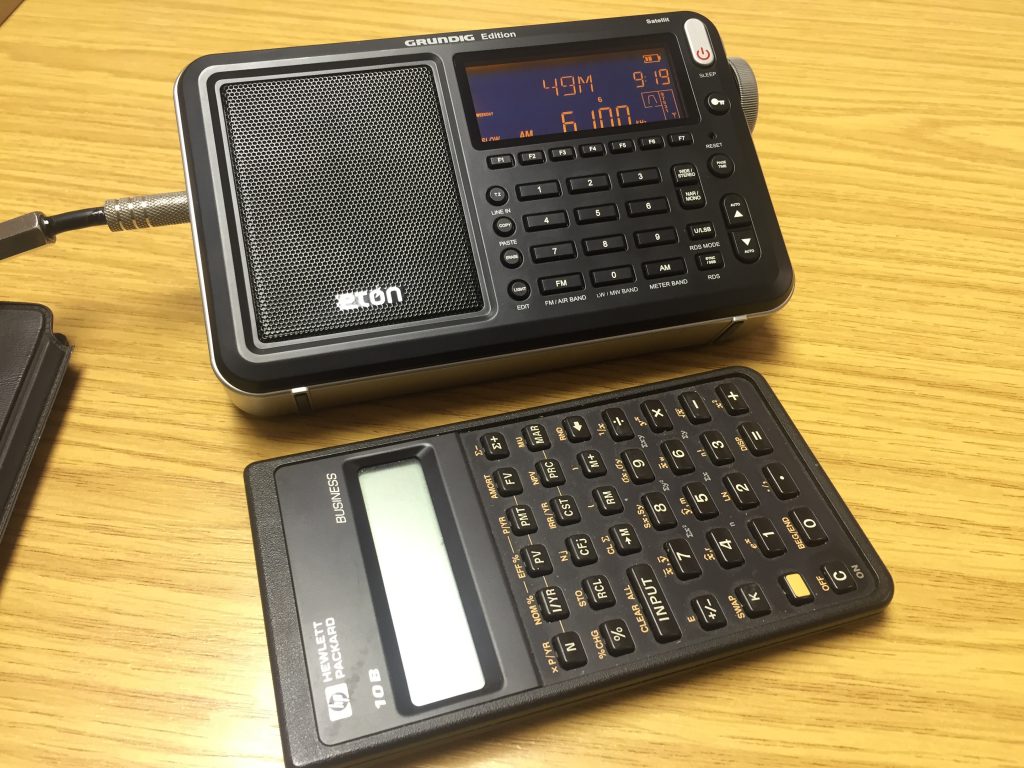
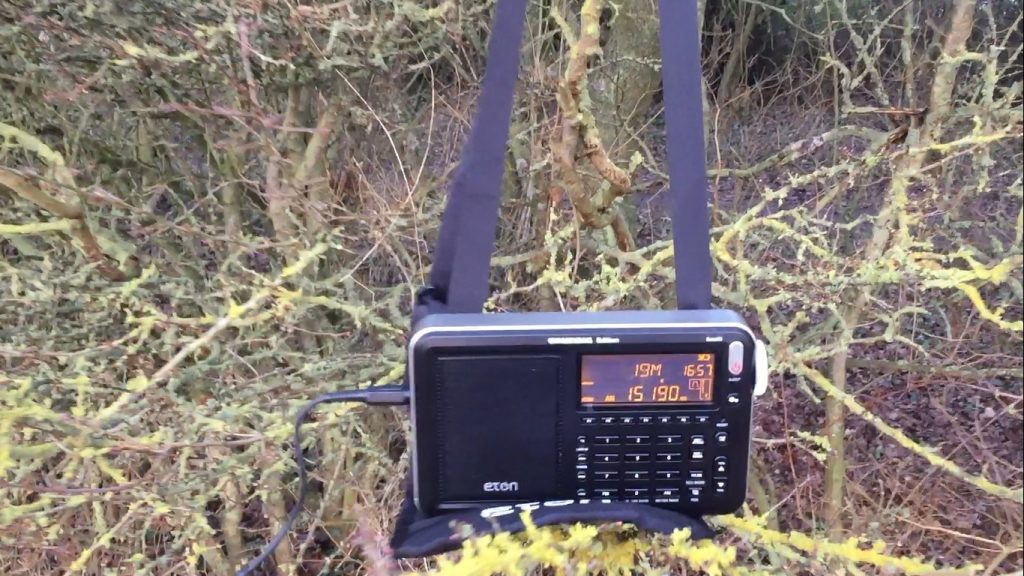
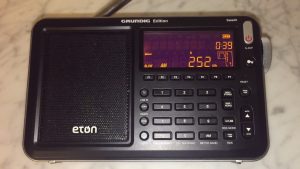
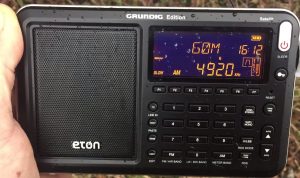
I have an Eton Elite Executive. My fine tuning adjustment is intermittent at best. Sometimes it will work, sometimes not. Most of the time it is “inop”.
I purchased this radio a couple of weeks ago. I attempted to use it with a little external wire antenna and the telescopic whip. As a result of these tests, I almost returned the radio, as it was not able to receive any decent signals especially in SSB. However, I decided to connect it to my newly installed outside long wire antenna. (250 feet). The results were astounding. This little rig exceeds the abilities of all of the rigs using high performance HF Dipoles and Vertical antennas. The listening antenna is perfect for SWL and I was blown away by the reception on SSB on all of the ham band that were open – particularly 160, 75/80 and 40 Meters. The antenna I am using now is close to the ground (similar to a beverage antenna) and is not terminated (yet). I am going to test the S/N levels with and without termination, but I don’t see how I could improve my listening experience with the Satellit. I am glad I gave it a chance. I just printed a nice stand for it, which makes it easier to use on the bench. 73 everyone! Kent N4KRO
Has anyone noticed the DX / Local switch does not work on the AM broadcast band ? This switch seems to work on SW, AIR, and even FM. Maybe I got a defective unit, but I find this is very strange. Can anyone confirm this ?
Hi Hal, I just saw your question. Mine does not work on MW or LW. The DX switch definitely helps on all the other bands; however.
Best regards,
Kim H.
SSB FINE TUNE NOT WORKING PROPERLY
I purchased my Grundig Satellite a few days ago and I can not get the SSB fine tune to work.
I and put the radio in fine tune then adjust it but then nothing.
Does anyone have detailed instruction on using the SSB fine tune ?
Any help would be appreciated.
I have the Satellit Executive and find that the MW sensitivity is quite acceptable, but using a Radio Shack 15-1853 loop in close proximity produces a HUGE improvement on very weak signals. I guess the local / dx switch does not work on MW, but it certainly does on FM which I find outperforms my Degen DE1103.
Like Clint I too am a fan of this little radio. It’s very sensitive on SW and MW, works well on FM too with the RDS displaying things like the PI code (I haven’t seen another radio in this class which does this). The sound quality is great for such a small radio. That gorgeous orange display was love at first sight for me 🙂
That being said there are a couple of things I don’t like:
– The Sync feature is garbage. Don’t buy this radio if you absolutely need sync. For some reason they can’t make sync working properly on these DSP radios. It’s the same on the Tecsun PL-880 but at least they never advertised sync on that radio because they probably realized it doesn’t work well at all.
– I bought the radio new a few months ago so it must have the new firmware. But muting is still very noticeable when tuning. I don’t mind it too much and I can live with it but I can’t figure out why they didn’t get rid of the muting completely. Is this a “feature” of the DSP chips? Do they need to add special circuitry just to disable the muting? If you like to cruise through the bands a lot by manually tuning you’ll probably hate the muting.
– My unit is deaf on LW. Really deaf. From what I saw on Clint’s videos his unit is better. He received Poland on 225 kHz while being in Italy. I’m much closer to Poland but I can’t hear a thing on 225 kHz on the Satellit.
I just got the Gunmetal Gray version –
called Etòn Elite Executive – probably 2019 or 2020.
On THIS version ( with full respect to Tudor’s Review ) and after about 4 hours with it on it’s AC Adapter …the
SYNC actually works quite well on AM signals – meaning those which have dual sidebands including AM for some DXing with 2 stations on top of each other .
It seems a bit hampered by the narrow bandwidth in SYNC mode but works well.
I got it to work once with a SSB signal by pre – detuning [ fine mode ] the SSB before engaging SYNC and moving the ‘slow’ setting back and forth – tedious ( and I know SYNC is not made for this ) but i was impressive because it boosted the SSB signal by about 5 or 6 db and only boosted the noise by about 2 or 3 db.
The sensitivity is good on AM and FM – comparing to a good Grundig G3 and I will check on batteries today , in addition to plugging into a power strip with adapter but power strip off – grounding the receiver . G3 has extra gain this way on SSB especially .
The Mute while tuning is bad on this one , annoying.
ALSO – very annoying is the tuning knob has a ‘FAST’ setting 5k at a time – WHICH DUPLICATES the UP DOWN arrow setting .
AND it has a ‘ STOP ‘ setting ?
Unfortunately these two must be cycled through often to get to other functions – THIS NEEDS TO BE DEFEATABLE , and the Muting while Tuning also.
The Unit does have a lower noise floor than most of the Tecsuns but suffers especially from the 4 K bandwidth in SYNC and SSB fine tune
and suffers slightly from the 6K widest setting.
The should ditch the lowest bandwidth and go to 6K in SSB and SYNC and top of 7.5K .
It does have a very nice sound though on FM and AM broadcast.
I am not a HAM but have logged time in Pro and Amateur recording studios.. the ‘distortion’ in SSB is mild and sounds like ‘ comb filtering ‘ and lessens the more one is fine tuned onto the SSB signal.
¿Why is there a fast mode and a stop mode that both must be clicked upon to get back and forth from the others ?
IF this is the SiLabs Chip used in the TECSUN PL 880 – should be easy to kill the Mute while Tune- right ?
I like the sound of this one but tuning
is tedious.
Low noise floor and SYNC are very good though.
IF the sensitivity goes even higher with grounding trick but running off batteries – I might keep it but probably not -due to the tuning wheel oddities.
I want to go from ‘slow ‘ to ‘fine’ on this wheel NOT step thru 4 modes.
Tudor- I just tried out the Eton Elite Executive . On my version which had 2020 in the serial number – it was gunmetal gray all over including the On Switch;
It was not quite as sensitive as some BUT the SYNC was very good.
K even fooled the SYNC into working on SSB , but it had a wide lock range.
My unit was a little dull at 6K setting on AM , and even FM ( auto bandwidth) …maybe the speaker was slightly bad …not as clear or as wide a bandwidth as my G3 , but more sensitive.
The SSB on good signals with the 10 hertz fine tune sounded almost like AM , very low noise . The low noise floor is best thing about this .
I may try another because the USB was about 40 to 60 hertz off and no way to independently adjust both bands independently – in service manual there may be.
I thing having 4 functions on the same tuning knob is not good .
I am not sure if the filters were off ( are they software ) or the speaker was low fi .
Like the low noise floor- I am not interested in DX ing but DX ing with LISTENABLE low static signals.
IF they took the Eton Elite Field and added the SYNC and a few more bandwidths WITHOUT changing the speaker or shielding ( losing NOTHING ) and kept the antenna hookups – and added a 10 hertz separate knob ) and NOAH for marketing / Eton Elite Field DX for 200 to 220 would be perfect .
No they can’t add a direct keypad , or they will add noise and screw it up.
Premium models are usually at the expense of other features ( like Tecsun PL 680 vs 660 and looks like the PL 990 vs PL 880 -[ oops we forgot the speaker and sensitivity… – I hope they prove me wrong on this but looks like 990 is not a clear winner in every category).
Either way – I would like to see you and Clint get a new Eton Elite Executive ( the Radio – not one of their marketing guys – lol )
And check it out .
I have proved that I am not a robot multiple times which is a great accomplishment to add to my resumè.
Two questions. What is the latest firmware revision and how to tell if a radio has it.
There are some good prices on this on eBay and some say it’s the latest edition with updated firmware but I want to know how to be certain.
Thanks.
I would also like to know the details on how to ascertain the radio is the latest version.
Well thank you Mr. Schwarzwalder. That’s a brilliant website. Bookmarked!
I can now refer to my radio as the “sah-tell-it” and not just “the 750”. Nice!
My pleasure Frank. I assume it’s pronounced Satell-it…but I’m sure one of our German speaking friends can confirm! 73! Clint
“SAH-TELL-IHT” https://forvo.com/word/satellit/#de
Thanks for the excellent review and the attention the you’re all giving this new radio. It appears my wallet is vulnerable yet again. I am a fan of Grindig Satellit’s despite some rather difficult Grindig experience in the past. What I really need to know is, is it pronounced Satell – “it” or Satell – “ite”?
Excellent review.
Thank you! 73!
Thank you. 73!
With this article you have reinstated this radios reputation to a part of the market as to which Eton had intended which was for DXERS, and very demanding enthusiasts. People can now read this article and watch the videos and make up their own mind’s this is how it should be, very commendable indeed. 73 Tom.
I completely agree, Thomas. Clint has done a fine job help bring this radio to the attention of DXers. I think it’s important to stress that interested DXers buy the Satellit from new, or newer-used inventory. A firmware update in the 2nd half of 2015 mostly fixed the soft mute issues. Evidently the antenna input jack has been changed to allow a mono plug, too. Eham.net reviewer Terry, KT7DX describes the changes he observed: http://www.eham.net/reviews/detail/12160. Other changes improved the LCD screen’s readability in direct sunlight, and the Sync-AM’s performance no longer depends on the setting of the SSB modes’ fine tuning adjustment.
I hope to make some comparisons between the Eton Satellit and other radios on a DXpedition in a couple of weeks. However, some quick tests between the Satellit and a Panasonic RF-B65 at home have shown the receivers to be nearly identical in sensitivity on their whip antennas.
Thank you Guy. Look forward to your comparison videos! 73! Clint
Thank you very much Tom. The videos don’t lie – it’s a brilliantly performing shortwave portable, clear for all to see, 73! Clint
Can you post a video showing how soft mute is implemented in this radio? If possible can you show how the soft mute affect LW, MW, SW, FM and AIR reception whilst rotating the tuning wheel ?
Thanks
Did they ever fix the external antenna jack or do you still need
a stereo plug?
Hi rtc,
No stereo plug is needed! I purchased my Eton Satellit a couple of weeks ago and it works fine with a monaural plug as the external antenna connector.
Hi Pedro, I’ll try to post a video soon. 73!